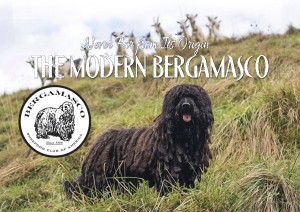Never Far from Its Origin – The Modern Bergamasco
Click here to read the complete article
 Authors Juan-Manuel Olivera-Silvera · F. Jane Gonzalez-Bass · Rob Laffin · Rachel Meyers · Irene Senedak
Authors Juan-Manuel Olivera-Silvera · F. Jane Gonzalez-Bass · Rob Laffin · Rachel Meyers · Irene Senedak
History
In the beginning, man’s relationship with dogs was limited to hunting. With the evolution of the human species, raising crops and livestock became some of man’s most important livelihoods. Dogs became well integrated into human communities and immediately found a place in what can be seen as man’s first steps towards civilization. Together with man, the dog became a shepherd.
With respect to the evolution of the Bergamasco, we must look to sheep migration. It is now universally accepted that the first centers for domestication of sheep and goats were in central and southern Asia and spread from this region. From these regions, populations migrated in search of new pastures from east to west, settling in mountainous zones along a practically uninterrupted line from the upper plains of Asia, across the mountains of Anatolia, the Caucasus, the Carpathians, and the Alps to the Pyrenees.
Scientists who dedicated their studies to cattle and sheep breeding in these regions noted the presence of dogs with long bristly coats. The origins of these dogs probably go back to the Himalayan zones where there existed a wolf known as Canis Lupus Loniger, which had a very thick coat. Along this route there are a number of dog breeds now recognized which are almost certainly direct descendants from this common ancestor. From a historical point of view, it is quite logical that a group of dog breeds with such similarities can be found along the routes followed by these migrant populations. Once these migratory populations abandoned their nomadic existence; together with their masters, they settled down in all parts of Europe and lost contact with groups located elsewhere. Each one of these groups of dogs assumed its own identity. However, these differences are not so great that we cannot recognize the different breeds’ common origin.
Click here to read the complete article
Short URL: http://caninechronicle.com/?p=195121
Comments are closed












